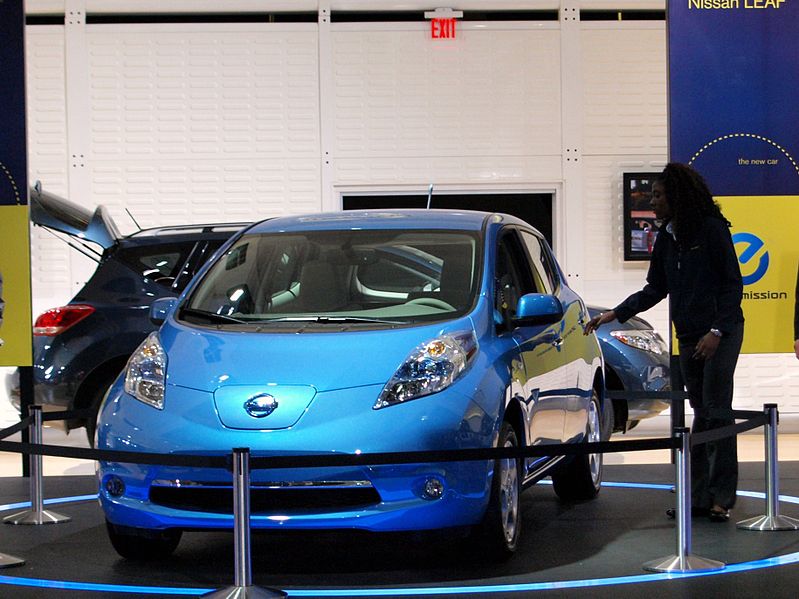
UC San Diego’s Shirley Meng talks energy storage
The future of the way we make, transmit, and use power rests heavily on the shoulders of energy storage technology.
The current electric grid in the U.S. is unstable, underfunded, and incapable to moving the nation toward a clean energy future. In order to utilize emerging renewable technologies, researchers have been setting their sights on developing energy storage devices capable of harnessing huge amounts of energy for applications ranging for grid storage to electric vehicles.
Y. Shirley Meng, ECS member and professor at the University of California, San Diego, is a scientist at the forefront of energy technology, pioneering cutting-edge fundamental advancements capable of pushing big breakthroughs in energy storage from the lab to the market.
Pursuing passions
Meng’s passion for energy was fueled by her curiosity about airplanes as a young girl. An urge to understand how some metals could be so light, yet so strong, initially steered her toward materials science. As Meng continued her education, she began exploring superconducting oxides and developing complex oxides for energy storage.
“After that, I learned about electric cars,” Meng, winner to the 2016 ECS Charles W. Tobias Young Investigator Award, says. “To me, they’re just absolutely fascinating. I’m one who doesn’t like tea sets; I like cars.”
Addressing climate change
While interests in energy and cars may have initially driven Meng toward EVs and sustainable energy solutions, she soon developed another passion that would motivate her in producing the fundamental research that could help transform the energy and transportation sectors: climate change.
Global development of industry and technology in the 20th century brought with it a substantial rise in the transportation sector, resulting in a massive consumption of fossil fuels. According to the U.S. Environmental Protection Agency, emissions from the transportation sector account for around 26 percent of all U.S. greenhouse gasses.
(MORE: Listen to more discussions in energy storage, the changing grid, and roadblocks in renewables.)
“I realized that enabling electric cars is one of the keys to help with environmental sustainability issues,” Meng says. “There is no reason why we should be burning all this fossil fuel with millions of cars.”
Making large-scale storage happen
For Meng, the data on the effects of climate change is indisputable. At UC San Diego, she sees the Scripps Institute of Oceanography measuring the keeling curve, creating a graph that plots the ongoing change in the concentration in the Earth’s atmosphere – showing significant evidence of rapidly increasing greenhouse gas emissions in the Earth’s atmosphere.
“In 55 years, you see this tremendous increase in the CO2 levels, and scientists have already said a two degree increase in the global temperature is inevitable even if we make changes today,” Meng says.
In spite of these facts, Meng remains positive that EVs and a clean, renewable grid will become more widely accepted by society as the science behind energy storage advances.
“Sunlight is free for all of us,” Meng says. “If we would like to make it an indispensable resource for humans, we need to figure out how to make large-scale energy storage happen.”

The Nissan LEAF can travel 100 miles on a single charge and starts at $29,000.
Image: Michael Gil
Sociological barriers
Technological breakthroughs in energy storage have taking EVs from a pure curiosity to affordable and efficient vehicles. However, technological and sociological barriers are still present, preventing EVs from making an even bigger impact in the market.
“There are certain issues that could be addressed by technology – by science – and I have the ability to convince people that these electric cars are very efficient systems,” Meng says. “But there are questions. For instance, we call it range anxiety.”
The battery technology that is currently used in EVs cannot exceed 300 mile driving range on a single charge. Because you can’t pull into a charging station the same way you could a gas station, drivers tend to experience anxiety, specifically when traveling long distance.
However, a recently published study shows that range anxiety may be more of a mental issues than technical, stating that 87 percent of vehicles on the road today could be replaced by EVs and meet or exceed an average driver’s daily needs without recharging during the day.
Transforming the grid
While the transportation sector may rank second when it comes to greenhouse gas emissions, the energy sector claims that first place spot. For Meng, EVs and a green energy grid go hand in hand in aiding in the sustainability of the planet, both with the underlying common denominator of necessary advancements in energy storage.
The energy grid is the central component of energy generation and use. By changing the way we make energy (i.e. moving dependence from fossil fuels to renewable energy), the grid itself changes. The current electrical grid in the U.S. needs to produce exactly what is consumed at the time. The nature of this infrastructure causes huge issues for intermittent energy sources, such as solar or wind, that cannot be controlled as fossil fuels can. If the sun goes down or the wind stops blowing, large-scale blackouts could result. On the other end, extremely sunny or windy days could produce an excess of energy, potentially frying a grid that in not equipped to store energy fluxuations.
This is where fundamental research in energy storage plays a pivotal role.
Recently, Meng and a team of international researchers demonstrated a 30 to 40 percent increase in energy density in a battery’s cathode material by controlling oxygen activity. Novel advancements at the fundamental level help the development of better batteries and take society one step closer to developing affordable, efficient large-scale storage solutions.
But Meng isn’t putting all her chips on one specific battery, instead she is exploring everything from lithium-ion to sodium to aqueous flow batteries and beyond – taking full advantage of the applications these maturing and novel batteries could have.
Emerging battery technologies
Lithium-ion, for example, has been the gold standard in recent history for the energy storage of everything from smartphones to Tesla cars. The technology, which is just reaching its 25th anniversary of commercialization, has consistently shown promise for even large-scale grid storage due to its longevity and efficiency. However, there are other promising battery technologies out there that – even though they may not currently have a market – are, according to Meng, worth the effort.

The first lithium-ion battery was commercialized by Sony in 1991.
“There’s always this voice saying, ‘The market isn’t here yet,’” Meng says. “Maybe the market isn’t here, but as a scientist, I think this is the perfect opportunity because our job as academics is to explore things that industry can’t take the risks to explore.”
According to Meng, another emerging battery technology with promise is the sodium-ion battery.
“We want to see if there’s an alternative solution for lithium because something like sodium would be more abundant,” Meng says. “Sodium-ion batteries operate at a slightly lower potential, which would make them practical for grid storage, but not for electric cars because their energy density would be relatively low.”
An alternative to lithium would also be beneficial because it would create a multifaceted energy infrastructure. Currently, many countries depend solely on fossil fuels for a huge majority of energy production. In the political realm, some are questioning if we want to move for complete fossil fuel dependence to complete lithium dependence if there is a possibility to develop a more diverse way to power a country.
Lithium-oxygen batteries have been viewed as another potential alternative to Li-ion technology.
“There’s a lot of polarized views about if lithium-oxygen could be promising, but I always remember that scientists are allowed to dream,” Meng says.
According to Meng, you just have to look at the periodic table to see that both lithium and oxygen are very light elements, which means the combination of these two into a singular energy storage device could lead to extremely high energy densities. Because of this low-weight and high-efficiency combination, many are looking to Li-oxygen battery technology for the development of next-generation EVs capable of traveling long distances on a single charge.
“If one really makes oxygen a usable cathode, it will be fantastic technology,” Meng says. “Of course, right now we’re very far away from it. But if we don’t invest in the researcher, we are guaranteeing it will never happen.”
